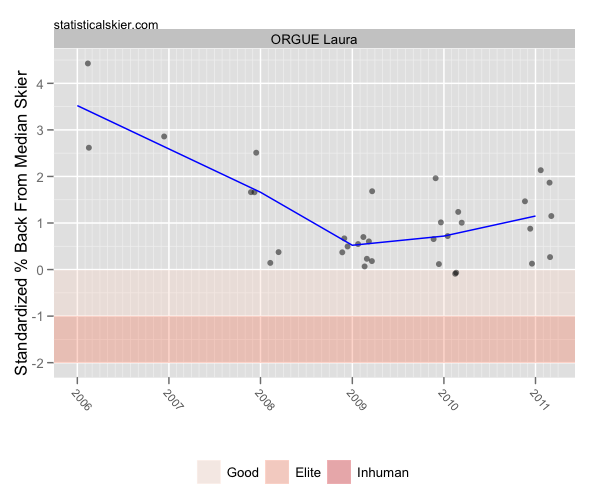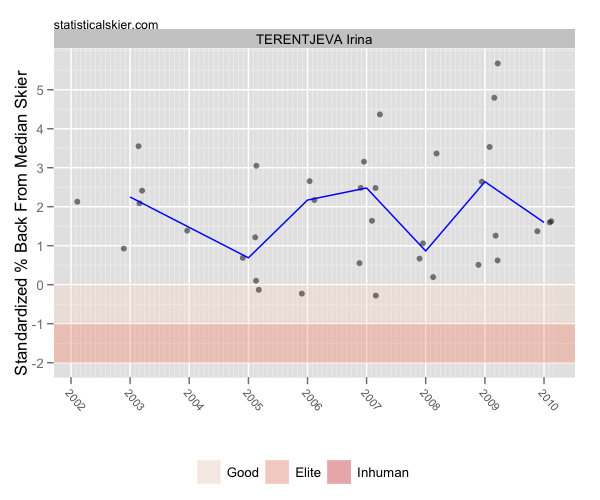I love the annual series FasterSkier does profiling each nation that scored nation’s cup points in the days before the World Cup begins. Usually by the time they reach Norway and Russia, I’m actually less interested, but the first week or so is a fun ride through nations with tiny, little known programs.
First up was Spain, featuring Laura Orgue. The correctly note that she’s basically the only real prospect they have, and thankfully she’s not terribly old (~25). What can happen a lot with these tiny ski programs (or even medium sized ones, really, like the US) is they latch onto a decent skier and basically ride them into their 40’s. However, looking at Orgue’s last few seasons, I’m a little concerned:
 No one’s pretending that Orgue has been anything other than a middle of the pack type of distance skier, but I’m worried that her results have plateaued a bit, perhaps even tailing off last season. In my experience looking at skier’s results, after the early rapid improvement, they often hit a plateau. But each year they spend stuck at that level decreases the chances that they’ll start improving again. The clock is ticking, so to speak.
No one’s pretending that Orgue has been anything other than a middle of the pack type of distance skier, but I’m worried that her results have plateaued a bit, perhaps even tailing off last season. In my experience looking at skier’s results, after the early rapid improvement, they often hit a plateau. But each year they spend stuck at that level decreases the chances that they’ll start improving again. The clock is ticking, so to speak.
As for the men, the FasterSkier profile if anything underplays the comical contrast of with and without Johann Mühlegg: Continue reading ›
Tagged johann muehlegg, laura orgue, season preview, spain, World Cup



